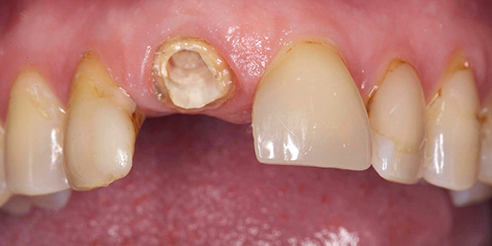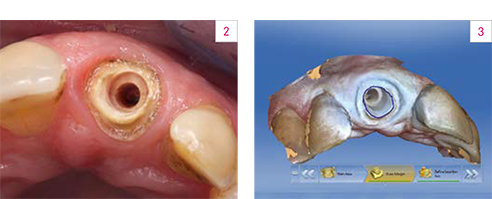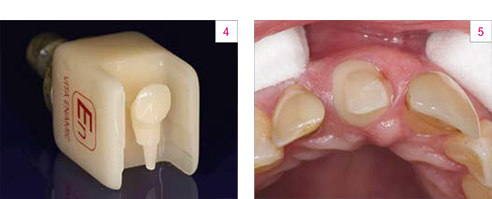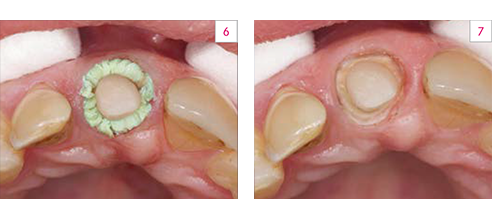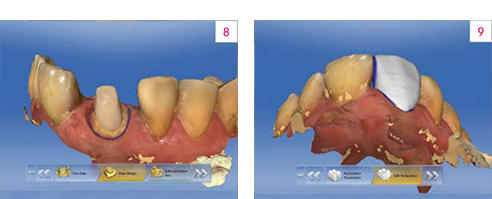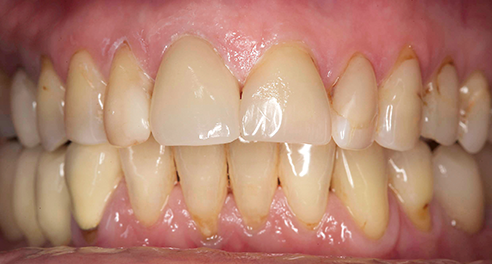Clinical case study: VITA ENAMIC – a material for endodontic restorations?
Peter Neumann, a dental surgeon from Berlin, Germany, has used the new VITA ENAMIC hybrid ceramic in combination with CEREC (Sirona Dental GmbH, Wals, Austria) to design and fabricate a post abutment upon which a crown can be cemented during the same session. This type of restoration is still at an experimental stage, however, he is already putting it into practice with positive clinical results. In the following article, Mr. Neumann provides a detailed description of his approach when treating this indication.
Initial situation
A fracture as a result of a metal post is a classic emergency case that requires immediate, and where at all possible, permanent treatment. A precarious initial situation of this kind often represents a final attempt to save the tooth. Compared with other, conventional ceramics, I believe that VITA ENAMIC, with its elastic modulus similar to dentin, has proven itself in this respect to be an excellent alternative solution to the usual options of abutments/posts. If correct preparation design is observed in this regard and a reliable bond ensured, longterm clinical success can be expected.
Preparation
The load-bearing capacity of the root was verified first, prior to carrying out preparation. For circular enclosure of the root, it is crucial that preparation is carried out using a barrel-hoop design (ferrule effect). The internal cavity for initial anchoring of the post material should be generously prepared (3-6 mm). However, for the purposes of stability, effective bond function is more important than achieving a post length of 2/3 of the root depth. The etchable VITA ENAMIC hybrid ceramic with its excellent etching pattern enables a superior quality bond in this case.
Design/post construction
The preparation was scanned using the CEREC Omnicam. CEREC 4.2 software (mode: crown – biogeneric) was used to create the design. The crown design was scaled, reduced and smoothed virtually as far as possible until a post construction was created. Milling was then performed using the Sirona CEREC MC XL milling machine. The post construction was then fitted and seated adhesively.
Processing/seating
The next step was to prepare the VITA ENAMIC post abutment. In order to prevent fractures, the circumference should not be less than 2 mm. Prior gingival retraction using retraction paste rather than the cord technique is recommended. This is followed by scanning and design. The crown material can be selected as required, and it is also possible to work with a laboratory, e.g. if the stump is severely discolored. In this case, the patient opted for a chairside solution comprised of polished VITABLOCS TriLuxe feldspar ceramic and was relieved that it was possible to save the tooth. Post abutments fabricated using VITA ENAMIC are not to be used as standard for all devitalized teeth, however, they are an excellent solution in my opinion in cases of severe substance loss.



